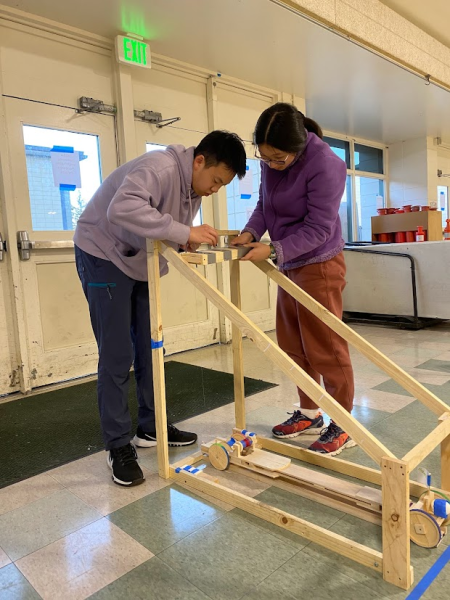Stressing about testing, virtually
Teachers, student reflect on effectiveness of online math tests
Testing is one of the most controversial topics in the education system, with recent debates covering standardized testing — such as if the SAT or ACT should be required — or how to appropriately give accommodations. The switch to virtual learning has raised even more challenges.
“Tests are not just to torture students and make them stressed out,” math teacher Katie Heaney said. “We need to verify that students have actually learned what they were supposed to learn.”
Tests are a crucial part of the learning process, informing both teachers and students of their progress. Math teacher Angie Essewein said she agrees with Heaney that planning and implementing tests is the hardest part of virtual learning for teachers.
“Even though I’ve been teaching for over 20 years,” Essewein said, “I feel like a first year teacher.”

(Photo by Miya Liu)
The main challenge teachers face is minimizing cheating, Esswein said. By simply opening a new tab, students have an abundance of internet resources available to use. Without in-person surveillance, students can easily use each other as a resource, as well.
Senior Nick Pugh said he noticed that although this is not a common practice, it still happens.
“Students will communicate with each other,” Pugh said, “and work on [problems] together when they’re not supposed to be [collaborating].”
The teachers are also aware of this, especially with students who are struggling in the class, since it usually comes from a place of stress and desperation, Heaney said.
“It makes me sad for them, but it also makes me irritated because it seems like they took the easy way out instead of actually working towards improving in the class,” Heaney said.
Accordingly, teachers have developed many strategies to reduce opportunities for students to cheat.
Uploading pictures of handwritten work discourages students from just copying answers, Pugh said. Esswein said she has also found that making students keep their videos on is helpful and both Esswein and Heaney keep their tests open note, with appropriate guidelines.
“There needs to be a time limit when you can look at all your resources,” Esswein said. “If you don’t know the concept and you’re trying to learn it during a test, that does not work out very well.”
As difficult as this transition has been, students have found advantages to taking tests online, Pugh said.
“I prefer this [online version of assessments] over normal tests because it’s a lot less of a stressful environment, since you’re in a comfortable spot at your house,” Pugh said. “There is less pressure and tension in the room.”











